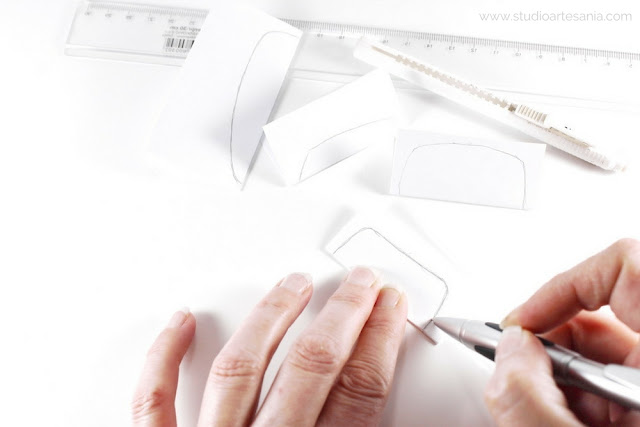How to create custom templates for jewelry making?

These days we can buy all sorts of cutters, templates, and stencils which make it easier for us to shape polymer clay, but sometimes they are pricey or we want to use the specific shape in a certain size that we can't find anywhere. The solution is to make your own custom templates. They are great for shaping and creating jewelry from polymer clay, air dry clay, porcelain, metal clay, ceramic, leather, plastic, metal sheets and all sorts of other materials. Once you learn how to create your own templates you will have a plenty options for using them in a lot of different DIY projects, not only for jewelry making. As well, they will help you to differ your design from others. I use custom made templates constantly, and you will see them in many of my previous and future DIY projects I share on my blog. Creating of custom templates for jewelry making is similar to those hearts I show you in the tutorial for Elegant cards, but now I will share some of my trade secrets and tips and tricks. So, let's get started!
Materials and tools
Printing paper (A4)
Pencil
Eraser
Ruler
Scissors
Curve ruler
Plastic folder
Non-permanent marker
70% rubbing alcohol
Cotton pads
Step 1.

Step 2.

Step 3.


Step 4.

Step 5.


You can transfer the shape of the template on another flat piece of paper in case you would not use it often, but know that plastic one is better and durable. That's it! Your templates are ready to use.
Tips, tricks, and few ideas



• For a form where you do not want sides to be identical, you first need to make a base template. Place the base template with the identical sides on the other piece of paper (do not fold that piece) and trace the shape with the pencil. Then draw the changes. Carefully erase the lines you do not need, and cut the shape.
 • To make the same template in various sizes you will need several folded pieces of paper and base template. Bend the base template and place a folded piece of paper in the middle of it. Trace the lines of the base template on the paper. Remove the base template. Measure and mark the dimension of smaller or bigger shape, and connect the points. Cut the shape with the scissors. Repete the process until you get all the variations of the desired size of the same shape.
• To make the same template in various sizes you will need several folded pieces of paper and base template. Bend the base template and place a folded piece of paper in the middle of it. Trace the lines of the base template on the paper. Remove the base template. Measure and mark the dimension of smaller or bigger shape, and connect the points. Cut the shape with the scissors. Repete the process until you get all the variations of the desired size of the same shape.








0 comments